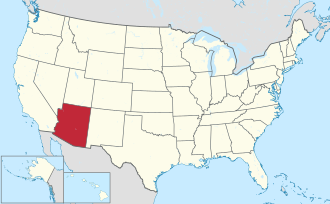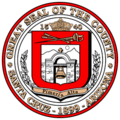2010 census
As of the census of 2010, there were 47,420 people, 15,437 households, and 11,992 families living in the county. [17] The population density was 38.3 inhabitants per square mile (14.8 inhabitants/km2). There were 18,010 housing units at an average density of 14.6 units per square mile (5.6 units/km2). [18] The racial makeup of the county was 73.5% white, 0.7% American Indian, 0.5% Asian, 0.4% black or African American, 22.9% from other races, and 2.0% from two or more races. Those of Hispanic or Latino origin made up 82.8% of the population. [17]
The largest ancestry groups were: [19]
Of the 15,437 households, 45.6% had children under the age of 18 living with them, 55.7% were married couples living together, 17.1% had a female householder with no husband present, 22.3% were non-families, and 19.0% of all households were made up of individuals. The average household size was 3.05 and the average family size was 3.51. The median age was 35.6 years. [17]
The median income for a household in the county was $36,519 and the median income for a family was $40,933. Males had a median income of $30,666 versus $25,135 for females. The per capita income for the county was $16,209. About 20.6% of families and 25.2% of the population were below the poverty line, including 36.8% of those under age 18 and 15.7% of those age 65 or over. [20]
2000 census
As of the census of 2000, there were 38,381 people, 11,809 households, and 9,506 families living in the county. The population density was 31 people per square mile (12 people/km2). There were 13,036 housing units at an average density of 10 units per square mile (3.9 units/km2). The racial makeup of the county was 76.0% White, 0.4% Black or African American, 0.7% Native American, 0.5% Asian, 0.1% Pacific Islander, 19.7% from other races, and 2.6% from two or more races. 80.8% of the population were Hispanic or Latino of any race. 79.7% of the population reported speaking Spanish at home, while 19.5% speak English. [21]
There were 11,809 households, of which 45.6% had children under the age of 18 living with them, 61.3% were married couples living together, 15.4% had a female householder with no husband present, and 19.5% were non-families. 16.5% of all households were made up of individuals, and 7.1% had someone living alone who was 65 years of age or older. The average household size was 3.23 and the average family size was 3.66.
In the county, the population was spread out, with 33.6% under the age of 18, 8.2% from 18 to 24, 26.6% from 25 to 44, 20.8% from 45 to 64, and 10.7% who were 65 years of age or older. The median age was 32 years. For every 100 females there were 91.7 males. For every 100 females age 18 and over, there were 86.2 males.
The median income for a household in the county was $29,710, and the median income for a family was $32,057. Males had a median income of $27,972 versus $21,107 for females. The per capita income for the county was $13,278. About 21.40% of families and 24.50% of the population were below the poverty line, including 29.% of those under age 18 and 23.2% of those age 65 or over.







